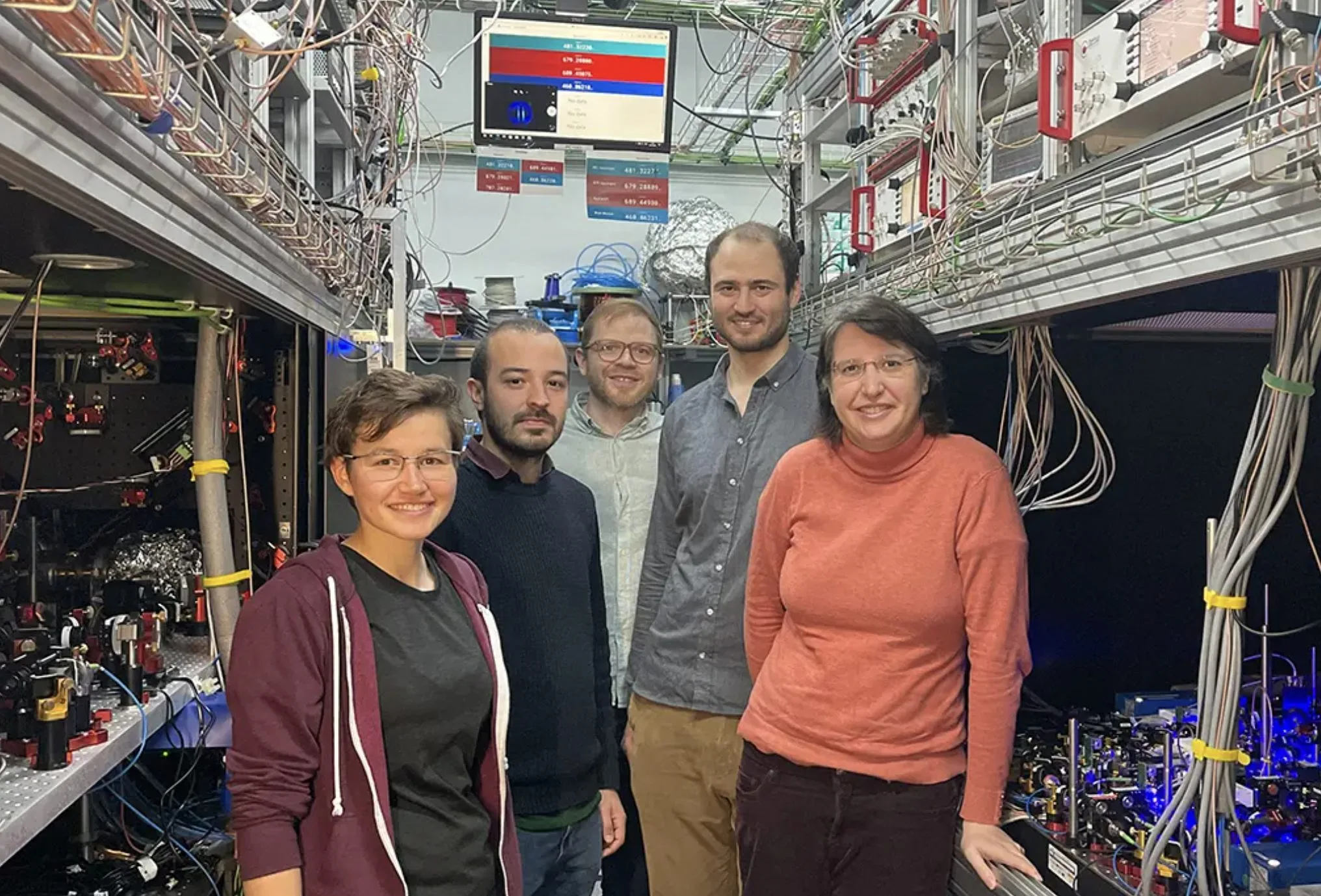Researchers at ICFO in Barcelona, Spain, led by ICREA Professor Leticia Tarruell, have built a unique quantum-gas microscope named QUIONE. This device is the only one in the world capable of imaging individual atoms of strontium quantum gases. Strontium offers more experimental possibilities than other atoms used in quantum computing and simulation. QUIONE’s purpose is to simplify complex systems for better understanding, potentially answering questions current computers cannot. The team’s work has received national and European support, including from the BBVA Foundation, Ramón Areces Foundation, La Caixa Foundation, and Cellex Foundation.
Quantum-Gas Microscope: A New Era in Quantum Physics
Quantum physics, a field that delves into the microscopic properties of materials, has been revolutionized by the advent of analog quantum processors. Among these, quantum-gas microscopes have emerged as a powerful tool for understanding quantum systems at the atomic level. These devices produce high-resolution images of quantum gases, enabling the detection of individual atoms.
Researchers at ICFO (Barcelona, Spain) have recently constructed their own quantum-gas microscope, named QUIONE, after the Greek goddess of snow. This unique device is the only one in the world capable of imaging individual atoms of strontium quantum gases and the first of its kind in Spain. The team, led by ICREA Professor Leticia Tarruell, includes Sandra Buob, Jonatan Höschele, Dr. Vasiliy Makhalov, and Dr. Antonio Rubio-Abadal.
The Unique Properties of Strontium
Quantum-gas microscopes have traditionally relied on alkaline atoms, such as lithium and potassium, due to their simpler optical spectrum. However, the ICFO team chose to work with strontium, an alkaline-earth atom, due to its unique properties. Strontium offers more variables for experimentation and has become increasingly popular in quantum computing and quantum simulation applications. For instance, a cloud of strontium atoms can function as an atomic quantum processor, capable of solving problems beyond the reach of current classical computers.
QUIONE: A Quantum Simulator of Real Crystals
The ICFO team’s experiment involved bringing the strontium gas to the quantum regime, placing it in an optical lattice where the atoms could interact via collisions, and then applying single atom imaging techniques. The researchers first reduced the temperature of the strontium gas to almost absolute zero using laser beams. At this temperature, the atoms display quantum superposition and entanglement.
The researchers then activated the optical lattice, which keeps the atoms arranged in a grid along space. The atoms interacted with each other, sometimes experiencing quantum tunnelling to move from one place to another. This quantum dynamics between atoms mimics that of electrons in certain materials, making the study of these systems instrumental in understanding the complex behavior of certain materials.
Observing Quantum Behavior
Once the gas and the optical lattice were ready, the researchers took images with their microscope and could observe their strontium quantum gas atom by atom. They also took videos of the atoms and observed that, while the atoms should remain still during the imaging, they sometimes jumped to a nearby lattice site due to the phenomenon of quantum tunnelling.
The research group also used their quantum-gas microscope to confirm that the strontium gas was a superfluid, a quantum phase of matter that flows without viscosity. This was achieved by switching off the lattice laser, allowing the atoms to expand in space and interfere with each other, generating an interference pattern due to the wave-particle duality of the atoms in the superfluid.
QUIONE and Quantum Technologies in Barcelona
QUIONE is a program created by ICFO that aims to use quantum processors based on individually controlled and detected ultra-cold atoms to solve problems hard for classical computers. The program includes the analog quantum processor QUIONE I, the quantum-gas microscope mentioned in the study, and a hybrid analog-digital processor named QUIONE II, which is currently under construction. QUIONE is part of the eight major programs that the Government of Catalonia, through the Secretary of Digital Policies, is addressing to include Quantum Technologies as part of the Strategy of Catalonia, and establish Barcelona as a Core Innovation Hub for these technologies.
External Link: Click Here For More

